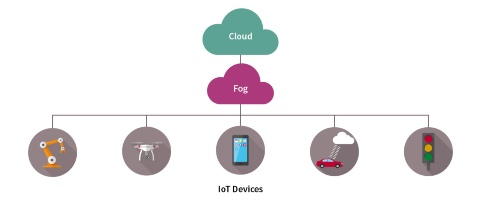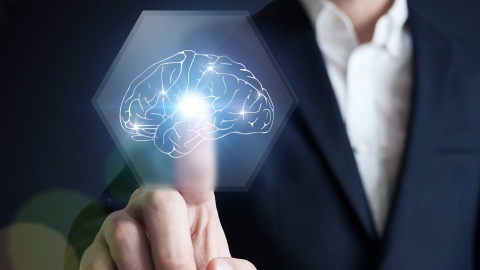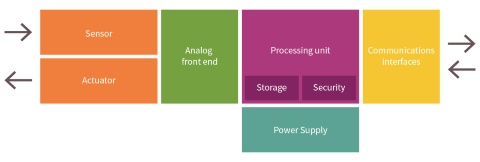
Whenever you think of online storage or data communication, the term “cloud computing” immediately springs to mind. What’s less well-known, however, is “edge computing”. So, what is it? Infineon provides sensors and actuators for edge devices in a wide variety of applications.
What is edge computing?
Cloud computing services offer multiple benefits and usually also high cloud security. However, it’s important to inform yourself about possible risks beforehand to make the right decision and react accordingly should anything occur. We summarized what you need to know about a secure cloud as a private person or company and what to consider when selecting a cloud service.

Check connection quality
Cloud computing requires a solid base. And many companies in rural areas face the challenge of having insufficient broadband connectivity. Those who have an internet access with a mere 6 megabit per second should not order cloud services for 100 employees. Otherwise, they might find their productivity and motivation considerably curbed when applications only react in slow motion due to low data transfer speeds.
Therefore, in the long run it is crucial to combine cloud computing with another innovative technology for a speedy and flexible data access: the future mobile communications standard 5G. This standard offers 100 times the transmission speed of LTE networks which has a positive effect on security due to reduced data transfer times. This means that data can be uploaded or downloaded particularly quickly – and new opportunities for secure cloud computing arise.
Network security through staff training
Knowledge equals protection. Therefore, companies should regularly train employees on cloud data protection and sensitize them to the importance of access data: those familiar with network security can detect discrepancies quicker and draw attention to conspicuous events. Cloud security solutions can provide additional safety. They register unusual activity of presumed users and report them, allowing companies to act quickly and take countermeasures.
Examples of typical edge devices
Edge devices are all types of connected smart systems that are equipped with microcontrollers, sensors and/or actuators. In most cases, these systems are known as “smart city”, “smart grid”, “smart building”, and “industrial IoT”.
Edge devices include highly integrated systems for very specific tasks, such as connected
- heating thermostats
- kitchen appliances
- electricity meters
- language assistants
- televisions
- mobile phones
Generally, the term “edge” is used very broadly and edge devices can even include all types of fully or partly autonomous vehicles, such as cars or drones.
The maker scene offers many platforms that are suitable for edge applications. For example, the “single-board computer from Raspberry Pi” is a full-fledged Linux-based Internet node. A “board from Arduino” can also be used for more simple applications. Both platforms are also popular in prototypes for commercial applications.
The servers are organized in computer farms and there is not usually any fixed assignment between servers and edge devices. You could say that the computing power is provided by a hazy cloud of anonymous servers, hence the term “cloud computing”. Data processing can, however, also be carried out in the edge devices, which is then referred to as “edge computing”.

The transition between “edge” and “cloud” is fluid. Additional computing power can also be found near the edge without a direct connection with a sensor or actuator. This type of data processing is often also termed “fog computing”.
What sensors and actuators are available for edge devices?
Depending on the specific application, edge devices are equipped with a wide variety of sensors and actuators:
- Microphones to recognize words and speech, localize and recognize speakers and sounds. To product page: MEMS microphones
- Optical cameras to localize and recognize people and objects
- Radar to capture distances, speeds, classify objects and gestures. To product page: Radar sensors
- Time-of-flight for 3D capture of objects and authentication of people. To product page: ToF (Time-Of-Flight)
- Lighting and proximity sensors
- Hall sensors to capture magnetic fields and electric currents
- Motion sensors to capture acceleration, speed, and position
- Barometric pressure sensors for weather forecasting, altitude measurements. To product page: Pressure sensors
- Physical/chemical sensors to determine the composition of liquids and gases

How does edge computing work?
Sensors and actuators are located at the “edge”. Sensors capture the real world. Actuators manipulate it. Analog measurement data is converted into digital parameters at the edge and digital control variables are converted into analog output signals.
Edge computing means that captured data is not first sent to a server for central processing but is processed there and then. For example, a microprocessor can directly derive actions from measurement data and activate the actuators.
Examples for actuators
- A temperature sensor records the room temperature and then switches the heating system on or off – depending on the control algorithm and desired temperature.
- An angle or distance sensor records a position and activates a motor accordingly.
What is an “embedded system”?
An “embedded system” is usually an integrated system comprising sensors, actuators, analog/digital conversion, and a processor. In the form of an edge device, an embedded system also has a communication or network interface to the cloud. This is used to send captured or locally preprocessed data to central servers or to receive commands and configuration data.

New applications through artificial intelligence (AI)
The term “edge computing” has become established over the past few years along with the increased use of artificial intelligence (AI) and neural networks.
The wide availability of data and computing power in the cloud has led to huge advances in the area of artificial intelligence and machine learning. The almost unlimited data processing capacity that is now available in the cloud can be used to train increasingly comprehensive artificial neural networks for challenging tasks. Machine-taught algorithms have led to breakthroughs in many areas. These include:
- Recognition and processing of natural language
- Text recognition and text generation
- Classification and tracking of objects with imaging sensors
- Recognition of patterns and prediction of trends in large data records
- Personal authentication based on biometric features
Artificial neural networks comprise several layers of artificial neurons. These neurons are interconnected via synapses. Distinctions are made between the input, hidden, and output layer. The artificial neurons generally represent the behavior of biological neurons in a very abstract manner. If the weighted and accumulated excitations at the synapses exceed a certain threshold, the neuron emits an excitation to the next layer of neurons. When a neural network is being trained, the synaptic weights are defined gradually via a learning algorithm by means of extensive training data.
Artificial neural networks can have several million neurons and billions of synapses. Even with high performance servers, training for a specific task is time intensive and can take days or even weeks. At first glance, it would seem obvious to locate artificial intelligence (AI) only in the cloud.
However, for pure execution or inference, trained neural networks need much less computing power than for the training itself. This fact, together with modern hardware-friendly network architectures and tools for efficient reproduction of these networks on embedded systems means that many artificial intelligence (AI) applications can also be carried out directly at the edge.

Security for edge devices
Data security is a key aspect of edge computing. Only certain data may leave the system, while other data must remain in the edge device. To ensure this, the integrity of the edge devices is checked continuously. Monitoring is carried out in particular to check whether its system software has been manipulated. The originality of planned updates of the system software must be verified.
For communication with the cloud, the edge device must first check the authenticity of the server and/or data service and then send the data encrypted. Currently, this is done using asymmetric cryptography methods and is supported by a public key infrastructure.
For this purpose, it is important that the security is established in the hardware as this cannot be manipulated as easily as software. Infineon offers “embedded trusted platform modules” specifically for edge devices. They can be used to ensure the integrity of the system, to check the authenticity of communication partners, and to securely encrypt data

Infineon and edge computing
Many edge devices use sensors, microcontrollers, security solutions, and power electronics from Infineon. In addition to semiconductor components and micro-mechanical sensors, the technology company, in collaboration with its SME partners, offers complete subsystems and devices in the area of edge computing.
Example: innovative alarm system
The innovative alarm system from Infineon is a good example of how edge computing solutions can enhance existing smart home systems. While microphones in existing alarm systems detect glass breakage during attempts to break into a home, the concept from Infineon, for which a patent has been registered, uses neural networks to evaluate a combination of audio and pressure information.
This minimizes the number of false alarms and significantly increases the reliability of the system. Another feature of the new alarm system is its flexible implementation: The Infineon solution is easy to integrate into existing glass break detection systems.

Summary
Edge computing is increasingly making its way into all areas of our lives. Sensors, actuators, and the associated power electronics are the interfaces of the edge device and, consequently, of the entire network to the real world. With edge computing, data can be processed locally and – only what is absolutely necessary – transferred to the cloud. Ultimately, the necessary computing power, energy efficiency, and latencies as well as security and personal privacy are the deciding factors when it comes to processing data in the edge or in the cloud. Both solutions complement each other. Algorithms based on artificial neural networks are not just reserved for the cloud, but can make smart decisions locally and enable new, revolutionary applications. Its triumphant advance has only just begun.
Last update: December 2019




